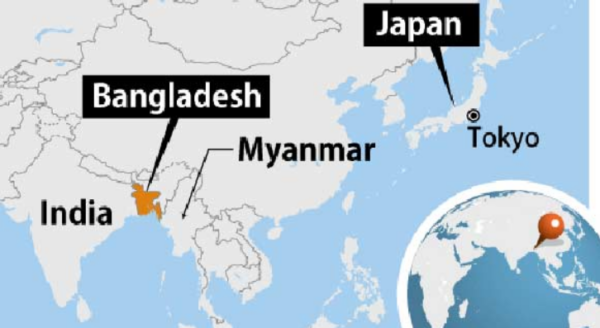The northeastern states of India—Arunachal Pradesh, Assam, Manipur, Meghalaya, Mizoram, Nagaland, Tripura, and Sikkim—are changing rapidly. It is now developing economically after overcoming certain security issues. Political changes helped. The substantial Bangladeshi linkages are too. Japan also helps India and Bangladesh develop.
The Asian Confluence (ASCON) conducted the third India-Japan Intellectual Dialogue (April 11–12, 2023) in Agartala, Tripura, providing an ideal chance to analyze experts’ and policymakers’ evolving views. It revealed that this decade may bring Bangladesh, India, and Japan closer.

A recent ASCON study calls this port “a game changer”
Matarbari Deep Sea Port (DSP) on Bangladesh’s southeast coast is a major project. It will be completed in 2027 with Japanese help. The port must serve Bangladesh and northeast India to be profitable. Bangladesh and the northeast will serve 220 million people as a regional hub and industrial corridor.
At the meeting, Japan’s Ambassador to India, Hiroshi Suzuki, stressed that regional industrial value chains are needed to connect roads and railways. Thus, quick industrialization in northeastern competitive industries is important. This plan ensures maximum usage and productivity of the new connectivity linkages. New industrial firms with national and foreign investment must accompany roads and ports to create jobs. Bangladesh and the northeast may prioritize connection and industrialization.
Northeastern resources are abundant. Its bordering countries—Nepal, Bhutan, China, Bangladesh, and Myanmar—are advantageous. Agro-processing, man-made fibers, handicrafts, assembly of two-wheelers and possibly mobile phones, and pharmaceuticals should be included in value chains and product manufacture. The well-educated population thrives in services, attracting investors.
Policy convergence and public participation solve problems.
Expanding policy convergence and involving people can solve problems. Japan cannot invest alone in the northeast. Indian firms must invest. India must ease Bangladeshi investment limitations. The three governments should strengthen economic ties.
Bangladeshi Minister of State for Foreign Affairs Shahriar Alam made an important point. He said Dhaka and New Delhi have “almost restored” pre-1965 infrastructural links between India and Bangladesh and are now going further. Mr. Alam noted that Bangladesh, which has enabled so much connection, now wants “reciprocity” from other countries (read: India) to better connect with Nepal, Bhutan, and Myanmar. India may help Bangladesh join the Act East Policy by assisting it.
Two more considerations. First, regional cooperation and integration discussions rarely mention the Bay of Bengal Initiative for Multi-Sectoral Technical and Economic Cooperation (BIMSTEC), which is self-defeating. To achieve the Bay of Bengal Community (BOBC) goal, something must alter.
Second, linking much of South Asia to Southeast Asia demands a skilled pilot. Bangladesh, India, and Japan (BIJ) can lead. The northeast will welcome a BIJ Forum started by Foreign Ministers.

